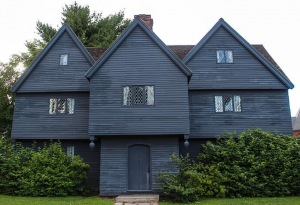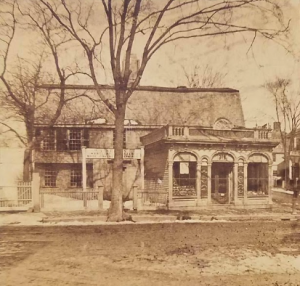A stately black house adorned with three gables and windows sparkling with tiny diamond panes of glass sits on the corner of Essex and North Streets in Salem. Its architecture, as well as furnishings from the seventeenth century on display inside, give visitors a deeper understanding of colonial Americans’ heritage. There are yawning fireplaces, a spinning wheel, and a bed that uses ropes to hold a mattress filled with straw. (When the ropes begin to sag, they are tightened, leading to the expression “sleep tight!”)
The house has a storied history since it was built in the early 1600s, though the actual construction date has been heavily debated. Roger Williams, the founder of Rhode Island, was thought to live here in 1631. Jonathan Corwin, a judge during the witch trials, lived here from 1675 until he died in 1718. His family continued to live there until the mid-1800s. The name “The Witch House” is deceptive as no witch has ever lived there. Nor were any witches examined for signs of witchcraft at the site, contrary to popular belief. The connection of this house to the witchcraft trials of 1692 was that Judge Jonathan Corwin lived here from 1675-1718. His family continued to live there until the mid-1800s.
In 1856 the house was purchased by George Farrington, a businessman and savvy marketer, who attached a storefront to the home. In it were a pharmacy, gift shop, and the entrance to the “Witch House Museum”. Farrington shifted the focus of the home from Roger Williams’ to Jonathan Corwin’s, dubbing the house the “Witch House”, and Salem “the Witch City”. He had postcards created to popularize the house and Salem as a tourist destination.
In the 1940s, a plan to widen the surrounding streets included demolition of the Witch House, but the newly created Salem Historical Society ojected and instead the house was moved back 35 feet. In order to return the house to its original appearance, the storefront was removed and the gables were restored. It opened as a museum in 1948. Its website can be seen here.


